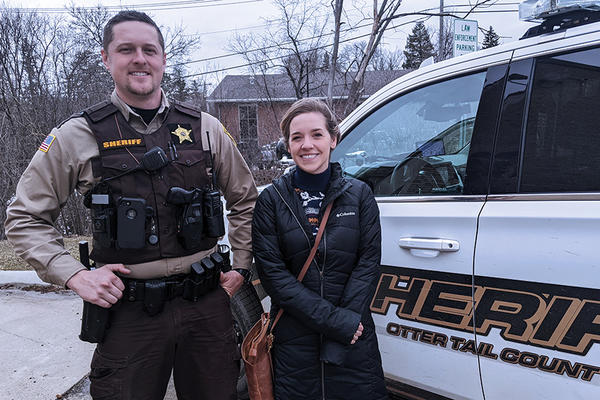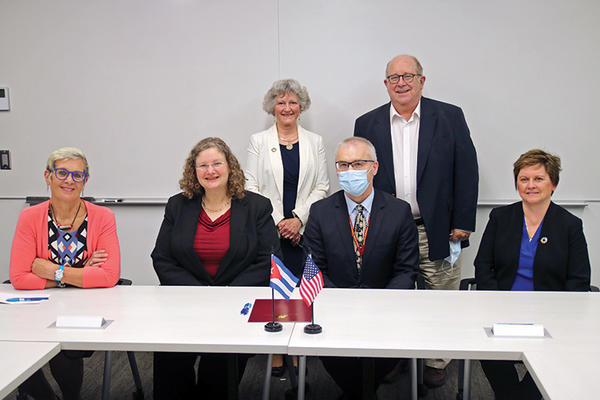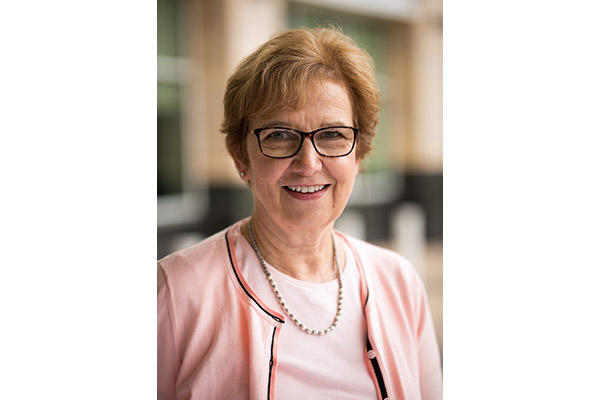Nursing research at the fair
High energy atmosphere provides a fun backdrop for research ranging from child resiliency to COVID-19 and heart health
October 25, 2022
Brett Stursa
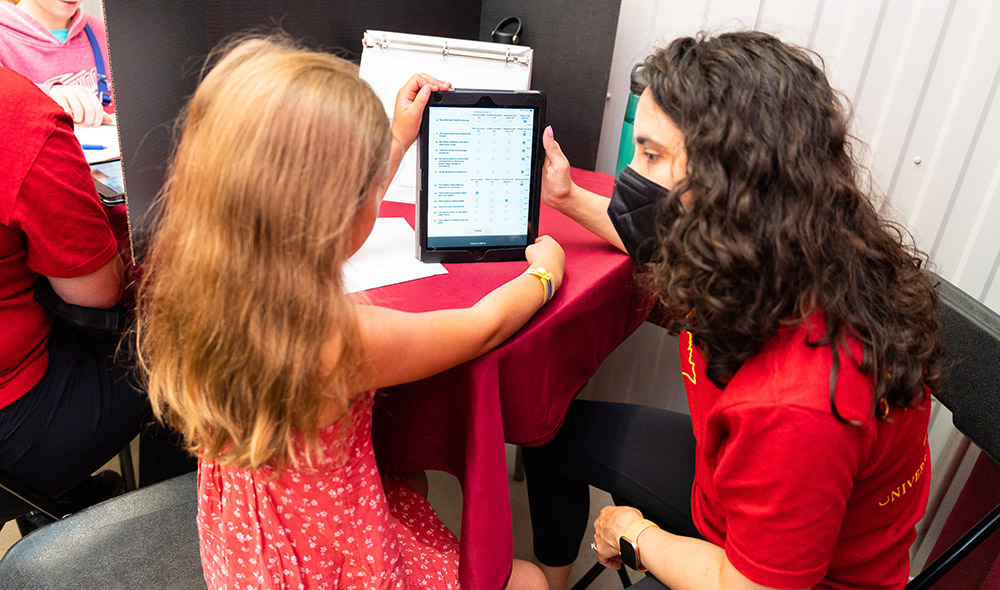
DNP student Emily Moccio assists a child completing a survey for the research project Resilience Portfolios in Youth: A Novel Measure of Protective Factors for Wellbeing at the Minnesota State Fair in August.
When Professor Wendy Looman, PhD, APRN, CPNP-PC, first began conducting research in the Driven to Discover Research Facility at the Minnesota State Fair, she noticed that even before the building opened people were waiting to get in.
“I looked out and there are all these people waiting to get in,” says Looman. “I used to think you had to beg and cajole people to participate in research. But when they open the door, people come rushing in.”
The Driven to Discover Research Facility was launched in 2014 to bring University research and researchers into closer contact with the Minnesota community. Nearly 2 million people visit the fair each year from across the state, which allows researchers to reach a diverse pool of participants and the opportunity to meet recruitment goals. At the same time, it gives fairgoers a better understanding of the research being conducted at the University and gives them a chance to participate in it.
“It just changed my perspective on how people in the community want to be engaged in research," says Looman, who is researching kids’ resiliency. “Kids are willing to put down their corn dogs and get off the rides and sit down with a research team member and talk with us about their life. What they share is deep and insightful. It makes research accessible to the public and to students in a way that you really can’t get in a lab.”
This year, nurse researchers from the School of Nursing conducted projects ranging from child resiliency and long-term COVID-19 symptoms to mobile health applications, heart attack and stroke prevention, and adult's perception of primary health care.
“These projects are an example of the different kinds of research being done in just a small cross section of the University,” says Associate Professor Mary Fran Tracy, PhD, RN, who conducted research on the physical, emotional and mental health symptoms people experience after having had COVID-19 and whether those symptoms continue. “All the researchers are happy to be present and you see the excitement and engagement of the University students who are participating in the conduct of research as well.”
Involving students in research
Nursing students often serve on research teams at the fair, providing them a firsthand look at what it’s like to conduct research.
“It’s an opportunity for students to be involved in a research study that is fun and low key,” says Looman. “In our project, students are collecting the data that they use for their honors thesis. So there is a real connection to the research experience that they wouldn’t have if they just used a data set that I collected.”
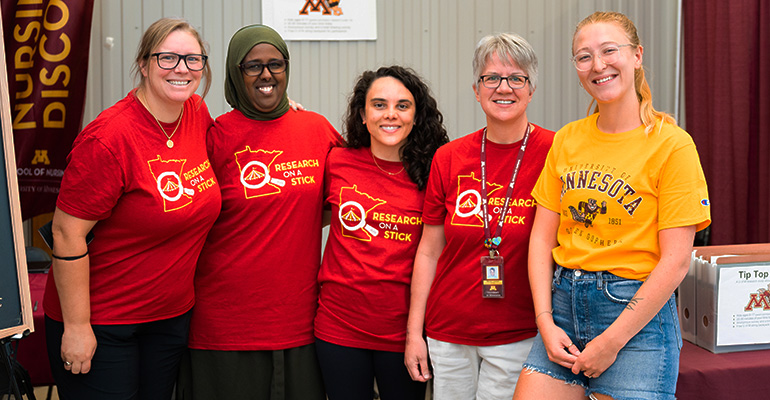
This year, 13 Master of Nursing students volunteered to consent participants, perform the measures and provide education on cardiovascular disease risk for Associate Professor Erica Schorr’s study Protect Against Heart Attack and Stroke: Know Your Numbers to Control Your Risk.
“I think state fair projects are ideal for getting students involved and interested in research,” says Schorr, PhD, BSBA, RN, FAHA, who adds that it was also a great opportunity for Sam Theesfeld, a new PhD student, to get experience as a co-PI on a research project.
Community participation in research
Research at the state fair provides fairgoers the chance to participate in research in an innovative way. For Schorr’s study, participants liked learning about how they can make simple changes to reduce their risk of heart attack and stroke. “And, of course, they love the prize wheel,” says Schorr, who created the prize wheel for participants to spin and get a chance to win a watch that monitors heart rate, physical activity and sleep.
“It’s a fun, high energy place,” says Schorr. “It’s not a quiet, sterile building that some people may envision when they hear the phrase research study.”
Being situated in the middle of the fairgrounds also makes it convenient for participants. More than 750 kids have participated in Looman’s study over three years, a number that she would have a difficult time reaching at a lab on campus. “I think the kids feel important,” says Looman. “They get to participate in science and parents appreciate that their kids get to know the university and be part of research.”
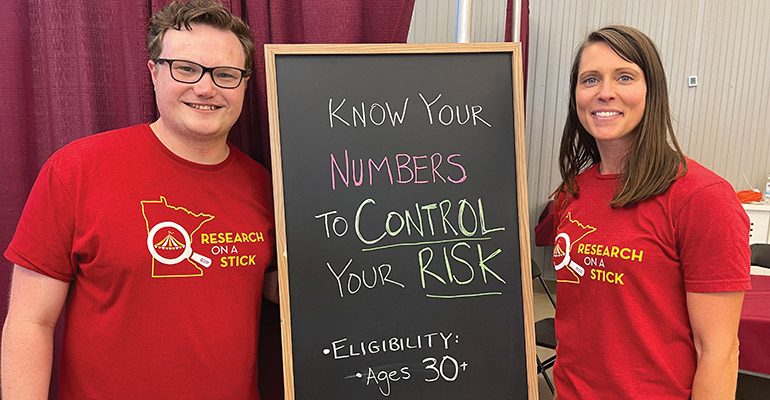
She credits Logan Spector, PhD, and Ellen Demerath, PhD, Driven to Discover Research Facility directors along with manager Annie Hotop, for creating a successful research atmosphere at the fair.
Assistant Professor Robin Austin, PhD, DNP, DC, RN-BC, FAMIA, FNAP, who conducted research related to the use of mobile health applications, appreciates the opportunity to bring her work to the public and receive input from the community. “I think it is a great way to be a part of our land grant mission of our University and bring research and work we are doing at the School of Nursing to those in the community,” says Austin.
